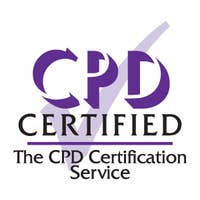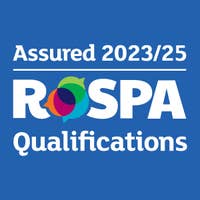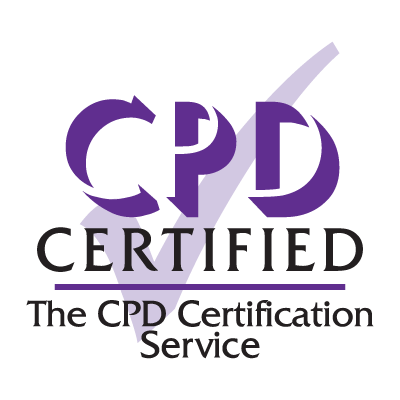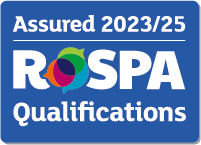Personal Protective Equipment (PPE) Training
Quantity: 1

Duration 2-3 hours



100% online training
Start when you like
Learn on any device (desktop, mobile or tablet)
Instant assessment and result
1 learner per course
Train teams of all sizes
Bulk discounts starting at 10% off 10 courses
Pay by invoice with 30 day payment terms available (5+ courses)
Includes a 10% discount for 10+ courses
This Personal Protective Equipment (PPE) Training course helps learners understand how to use PPE safely and correctly. The course is designed to provide employers, senior staff, and employees with a good understanding of the role of PPE for work activities. It outlines the responsibilities of employers and employees in the safe selection, use, supervision, maintenance, and storage of PPE, and explains the key principles and practices that help to ensure PPE is an effective part of the management of health and safety at work.
The course outlines the legal duties placed on employers, the self-employed, and employees at all levels in relation to PPE. It explains the position of PPE in the hierarchy of control, as it's crucial to understand that PPE is always used in conjunction with other control measures where possible. With this knowledge, learners will understand the correct selection and use of PPE, which is vital for ensuring it is an effective part of the control measures for health and safety at work.
100% online training
Access anywhere
Same day digital certificate
Printed certificate posted next working day
Full audio voiceover
Assessment retakes at no extra cost
Developed by health and safety professionals
Accredited by CPD and assured by RoSPA Qualifications
Bulk discount for orders of 10+ courses

Save on our courses when you buy more training upfront. Lock in a better price now and access the training whenever you need to. You can mix and match any of our courses too and get the discount off your whole order.
10+ courses = 10% off
50+ courses = 20% off
100+ courses = 30% off
500+ courses = 40% off
On completion of this course, learners will understand:

Accredited by CPD
All of our courses are accredited by the CPD Certification Service as conforming to universally accepted Continuing Professional Development (CPD) guidelines.

Assured by RoSPA Qualifications
This course is also assured by the Royal Society for the Prevention of Accidents through their RoSPA Qualifications Assurance System, as providing up-to-date, quality and content-approved training.
Recommended renewal:
3 years
What does this mean? This certificate does not have an expiry date, however, based on industry best practice guidelines there is a recommended renewal period.
Our in-house Learning Designers develop all of our courses to give you and your learners the most engaging training possible.








What is PPE at work, equipment not included in the PPE Regulations, the role of PPE in health and safety at work, the hierarchy of controls, regulations that control the selection and use of PPE, and employee responsibilities.
What are risk assessments and who should carry them out, understanding hazard and risk in risk assessment, the five steps of risk assessment, selecting suitable PPE and involving employees, and the duties of manufacturers and suppliers in marking PPE.
Employer's duty to manage PPE selection, use, maintenance, and storage, case study: failure to manage the use of PPE, risks to and protection for the eyes and face, risks to and protection for the head, risks to and protection for the respiratory system, respiratory protective equipment: fit testing, and risks to and protection for hearing.
Body, arm, hand, leg, and foot protection, high visibility clothing, use of and key considerations for personal fall protection systems, PPE for work at or near to water, disposable PPE, health surveillance for work activities where PPE is used, maintenance, cleaning, repair, storage, inspections, and examinations of PPE, and information, instruction, training, and emergencies.
The online assessment is taken on completion of the training material. You will be asked 20 multiple choice questions with a pass mark of 80%. The answers are marked automatically so you will instantly know whether you have passed. If you don't pass don't worry! You can take the test as many times as you need with no extra charge.
This Personal Protective Equipment (PPE) Training course is suitable for a wide range of industries that may need to use PPE as part of the control measures for work activities.
It is suitable for all employees, as it teaches learners about what their responsibilities are in regards to the safe use and maintenance of PPE required for their role.
It is also suitable for duty holders such as employers and self-employed people, who have a legal duty to uphold health and safety, as it explains what their duties are in regards to the selection, use, supervision, and maintenance of PPE. It can also be taken by senior staff, such as managers and supervisors, who will be involved in the selection, use, supervision, and maintenance of PPE.
Looking for PPE Training for a Healthcare Environment? Our PPE Training for Healthcare Workers course is better suited for you.

In partnership with
Neil Murray
Health and Safety Consultant
Neil Murray is a vastly experienced and highly qualified health and safety professional who has held roles such as Senior Health and Safety Executive inspector, and Principal Inspector for Channel Tunnel construction. He has also held senior roles in an international infrastructure business, a major UK water utility company and a major construction group and provided management consultancy to numerous companies across a wide range of industries.
Neil has a wide expertise in many sectors, including construction, civil engineering, manufacturing engineering, water and waste utilities, education, heritage sites, public safety, rail construction and operation, transport, marine, waste management, engineering design and industrial and facilities management services.
Neil is a QSA auditor for RoSPA and also an author of published guidance on health and safety in the construction of the Channel Tunnel, work at height, major project management, and online training courses.
The course covers the selection, use, supervision, and maintenance of eye and face protection such as goggles and visors; safety helmets; respiratory protective equipment (RPE) such as powered respirators and breathing apparatus; hearing protection such as earmuffs and earplugs; body, arm, hand, leg, and foot protection such as protective gloves and safety boots; high visibility clothing; fall protection systems such as fall arrest systems; and PPE for work near water i.e. personal flotation devices (PFDs).
No, this course does not cover clinical PPE, e.g. disposable gloves and masks used in healthcare settings, as it is not covered by the Personal Protective Equipment (PPE) at Work Regulations 1992 (The PPE Regulations). The course focuses on the types of PPE that are covered by the PPE Regulations, as listed above.
This course does not cover ordinary indoor or outdoor clothing, uniforms to present a corporate image, clothing for food hygiene purposes, motorcycle helmets, and clinical PPE, as these are not covered by the Personal Protective Equipment (PPE) at Work Regulations 1992. The course focuses on the types of PPE that are covered by the PPE Regulations, as listed above.